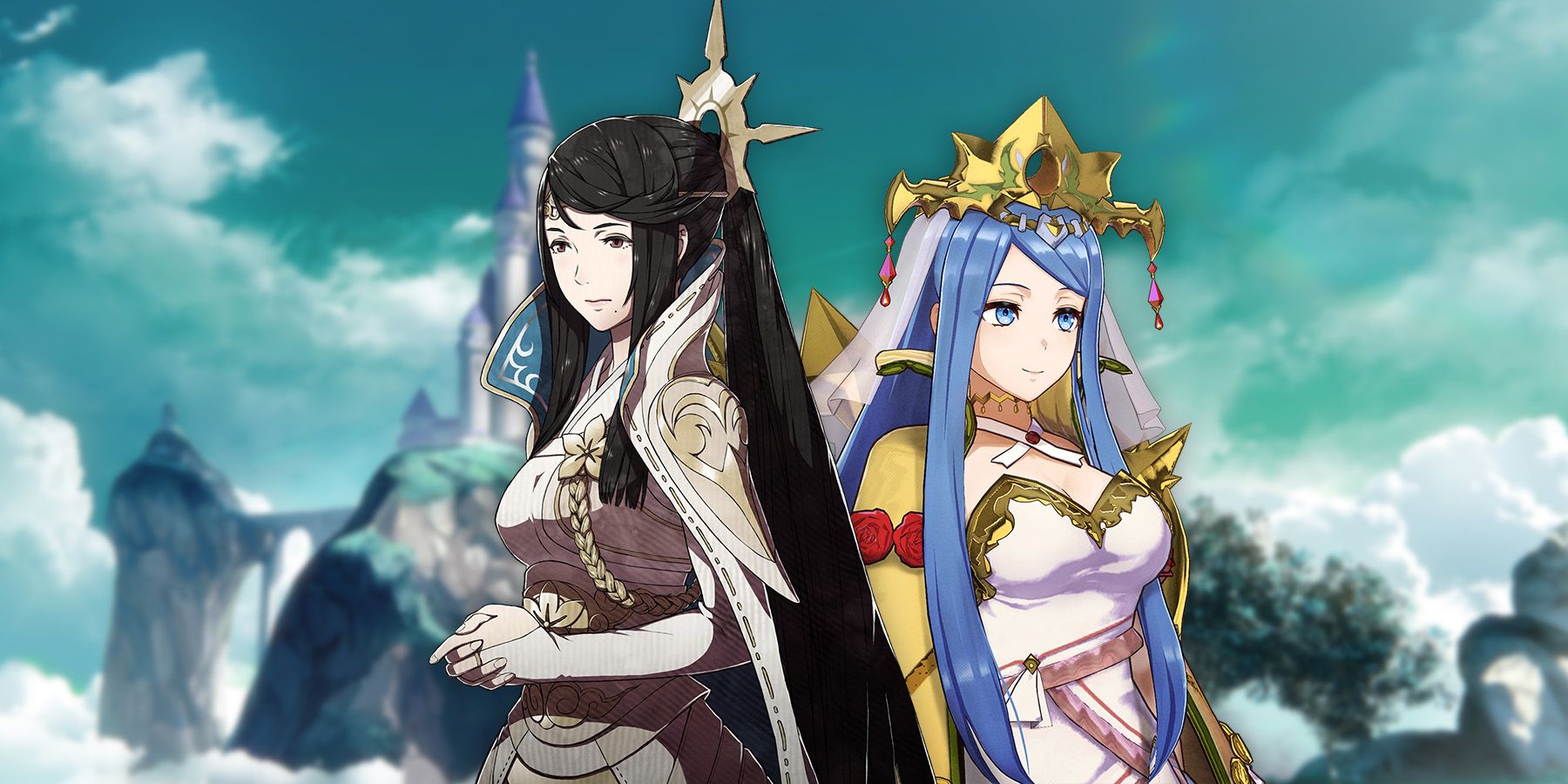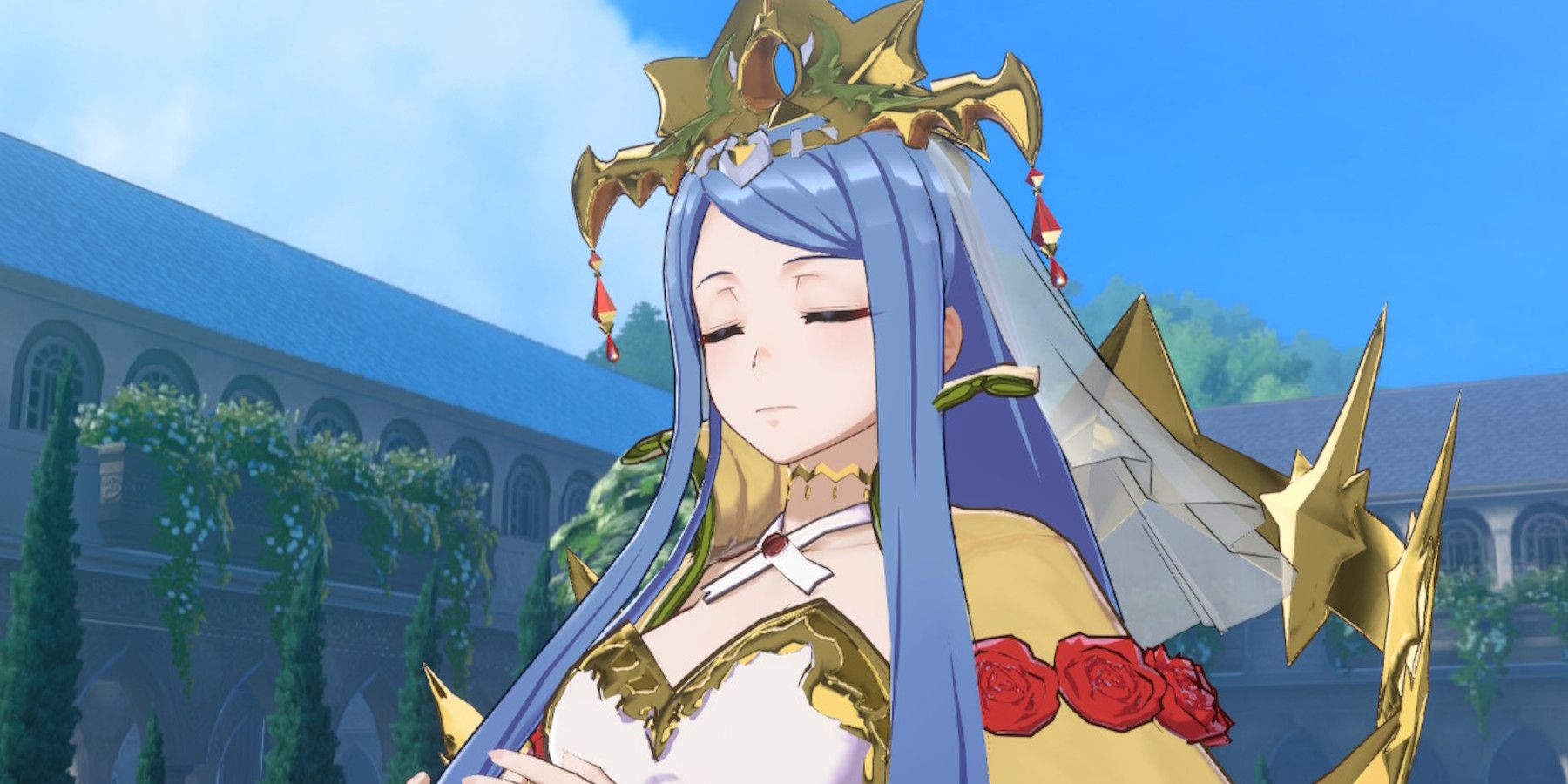PLEASE NOTE: This article contains EARLY-GAME Spoilers for Fire Emblem Engage and Fire Emblem Fates. Proceed at your own risk.Fire Emblem Engage continues the series tradition of placing nobility at the forefront of its story, with its protagonists typically being lords. This time around, players take on the role of the Divine Dragon, who awakens after 1,000 years of slumber with no memory of their past. Queen Lumera is an important figure who has kept watch over the Divine Dragon during their sleep; she is the ruler of Lythos and mother of the Divine Dragon. Her role in Fire Emblem Engage is very similar to that of Queen Mikoto of Fire Emblem Fates, showing parallels between the two entries in the series.
Parental figures have often played key roles in Fire Emblem games, whether they are villainous like Garon in Fire Emblem Fates, or heroic like Jeralt in Fire Emblem: Three Houses. Regardless of their alignment, the Fire Emblem series has a history of writing tragic stories for parents, and Fire Emblem Engage is no different. Much like the corruption of Garon or the tragic sacrifice of Jeralt, Lumera suffers a similarly heartbreaking fate that most closely resembles that of Queen Mikoto.
Lumera Parallels Mikoto in A Lot of Ways
Aside from being the mother of the protagonist in their respective games, Lumera and Mikoto share a lot of common thematic elements along with similar plot elements that highlight the parallels of the two characters. In Fire Emblem Fates, Mikoto is the Queen of Hoshido and second wife to the late King Sumeragi, who died protecting their child Corrin from Nohrian soldiers. The player, in the role of Corrin, ends up kidnaped by Nohr and is raised as a member of Nohrian nobility with King Garon acting as a surrogate father. After learning the truth of their birthright, Corrin returns to Hoshido to be reunited with their mother, Mikoto, only for her to be killed by a hooded assailant during Chapter 5.
Like Queen Mikoto, Lumera is separated from her child for an extended period of time. In contrast, however, she is able to remain with her child and keeps watch over them during their 1,000-year slumber, but despite remaining by their side, the Divine Dragon's memory loss makes the reunion with Lumera like meeting her for the first time. Like Corrin's reunion with Mikoto, Lumera's time with the Divine Dragon is cut short when she is also killed by a hooded assailant while trying to protect the Emblem Rings and her child at the end of Fire Emblem Engage's Chapter 3.
There are clear commonalities between these to motherly monarchs, with both being separated from their child for an extended period only to be slain shortly after reuniting with them. Both of their deaths signify the inciting incident behind the two games' main plot lines and serve as the respective protagonists' motivation to push forward, seeking justice for their mothers. While these deaths are tragic early-game occurrences, they ultimately serve the greater purpose of propelling the story and characters of Fire Emblem Engage and Fire Emblem Fates along their heroic quests.
Parents in Fire Emblem are like the Chekhov's Gun of the series; if the protagonist has parents present at the start of the game, they will likely be dead by the end. While this method of character development takes many forms throughout the series, the similarities between Lumera and Mikoto specifically are too great not to be addressed. With Fire Emblem Engage's emphasis on legacy characters through Emblem Heroes, it's not surprising that its new characters would take inspiration from the series' past as well.
Fire Emblem Engage is available now for Nintendo Switch.


